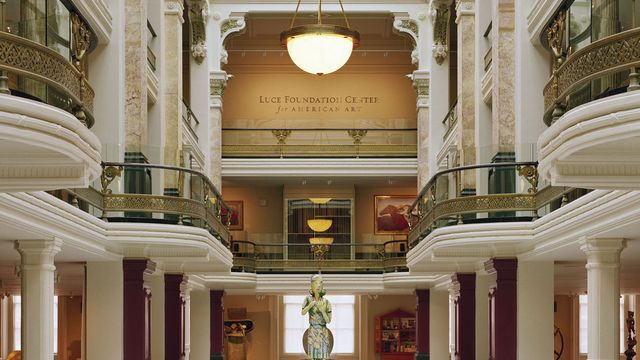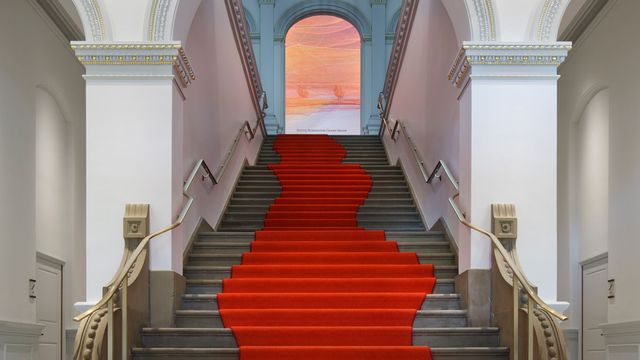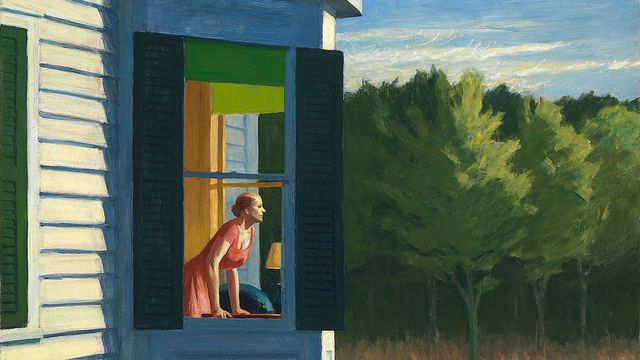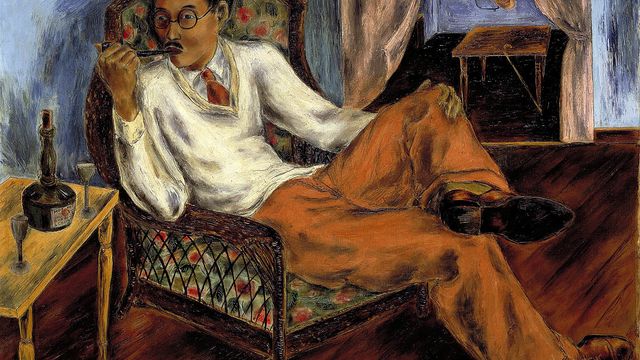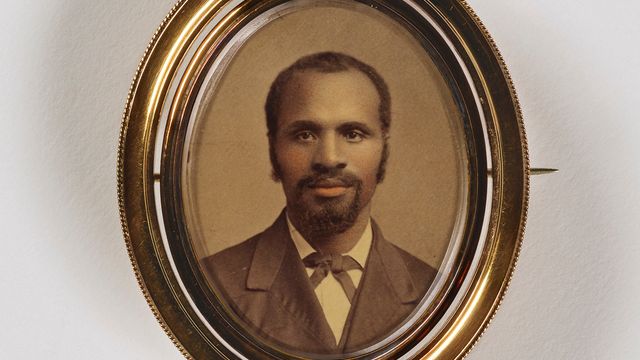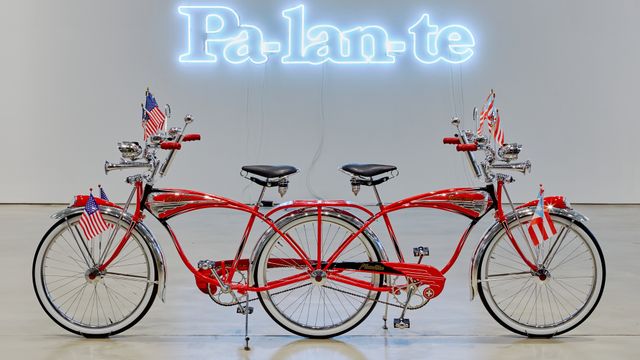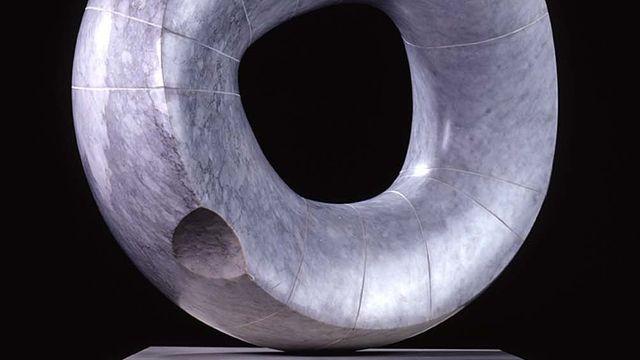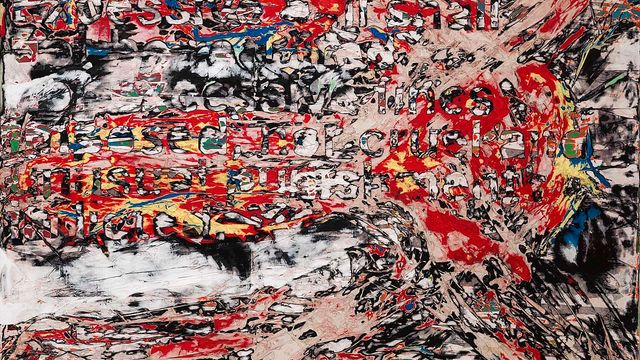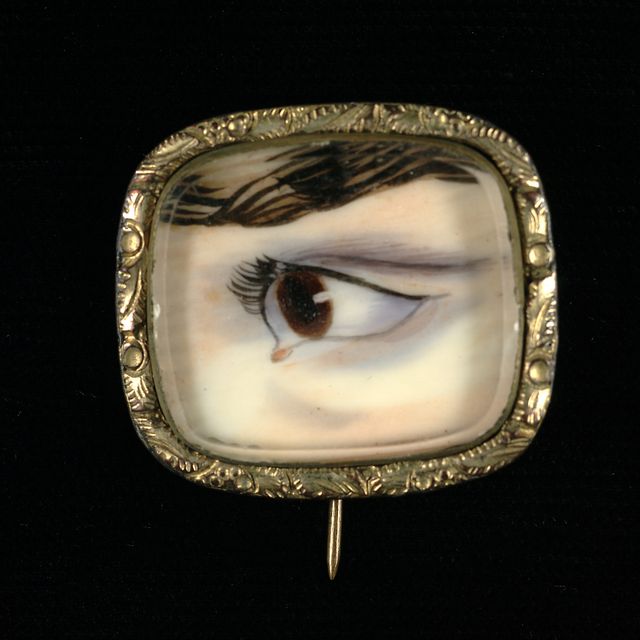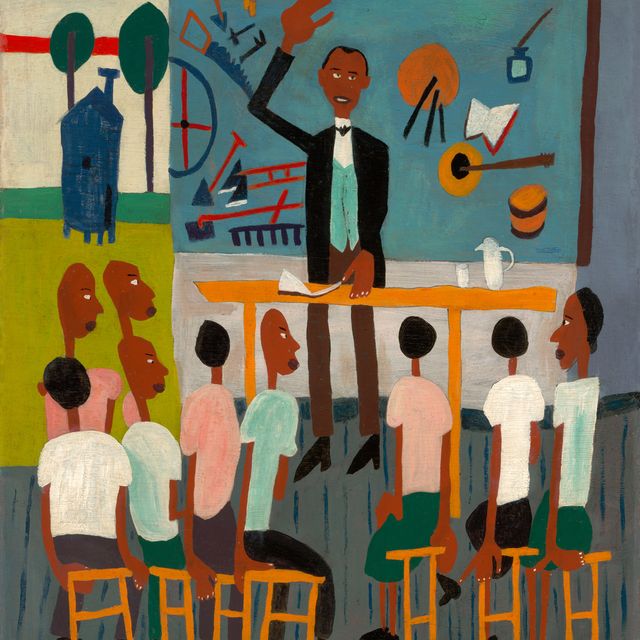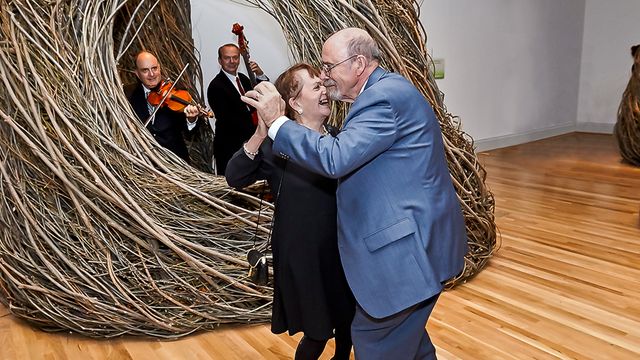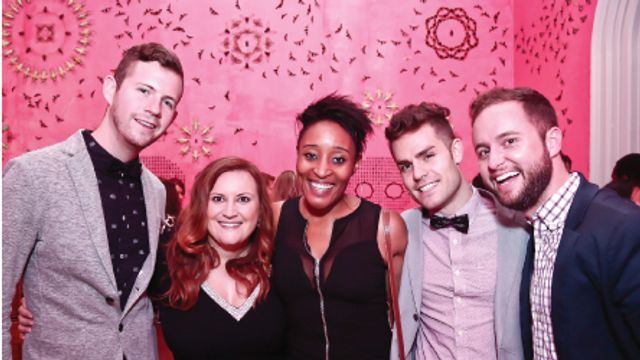Charmion Von Wiegand
- Biography
“I know that art will always change as life changes because it has one foot in life and the other in eternity.”
–– Charmion von Wiegand, 1968
Charmion von Wiegand was an artist who sought to infuse abstract painting with a spiritual essence. Across her career, she experimented with form and color while cultivating a deep engagement with East Asian artistic practices and cultures
The daughter of a journalist, von Wiegand grew up in Arizona, California, and Berlin. In 1915, she enrolled at Barnard College and then transferred to Columbia University. Von Wiegand studied journalism and art history, developing an interest in Chinese, Indian, and Persian cultures, and she also started drawing. A revelatory experience with a psychoanalyst in 1927 led von Wiegand to begin painting, though her primary focus remained journalism. In 1929, she relocated to Soviet Moscow and worked for an American news outlet. During this time, von Wiegand painted industrial landscapes, reflecting her engagements with socialism and its commitments to workers.
In 1932, von Wiegand returned to New York City. She began regularly writing art criticism and connecting with other modern artists, like Ukrainian-born American painter John Graham. In 1941, von Wiegand initiated a formative dialogue with the Dutch abstract painter Piet Mondrian. “From that first meeting,” she recalled, “my eyes were transformed.” She went on to edit and translate many of Mondrian’s writings, largely uncredited. Von Wiegand also engaged with his geometric abstractions and their relationship to Theosophy—a late nineteenth-century religion combining aspects of Buddhism, Hinduism, esotericism, and occultism.
During the 1940s, von Wiegand began working in an abstract mode, joining the American Abstract Artists group in 1941. Early on, her paintings featured organic forms arranged using stream-of-consciousness methods central to the surrealist artists who were both subjects of her critical writings and her friends. After Mondrian’s 1944 death, von Wiegand expanded upon his geometric abstractions in compact and dynamic compositions. Around mid-decade, she began making collages like Transfer to Cathay (1948, SAAM), spurred in part by her growing familiarity with Kurt Schwitters and his collages.
By the early 1950s, von Wiegand increasingly yoked the act of painting to spiritual searching, turning especially to Theosophy and, in turn, its origins in Buddhism. During this decade, she traveled “extensively in the library and in my arm chair,” as she put it, studying a host of Theosophical, Taoist, and Tantric texts. She also attended lectures given by Daisetz Teitaro Suzuki, a scholar of Zen Buddhism, and practiced with one of the first yogis in the West. Von Wiegand began to incorporate related iconography, like mandalas and stupas, into her painting. Initially operating primarily as motifs, this iconography came to be an expression of her own developing spiritual practices.
During the 1960s, von Wiegand organized one of the first exhibitions of Tibetan art in the United States (1969, American Federation for the Arts) and gained similar firsthand knowledge of Buddhist imagery during a transformative visit to a New Jersey monastery. She took up the brighter colors and Tibetan symbols encountered in these contexts in subsequent paintings, such as “Nothing that is wrong in principle can be right in practice.” –Carl Schurz, 1929-1906 (1966, SAAM), created for the Container Corporation of America's advertisement series Great Ideas of Western Man. By the 1970s, von Wiegand’s artistic output slowed, but journeys to Tibet and India deepened her spiritual practices.
As von Wiegand joined primarily East Asian spiritual traditions with tenets of Euro-American art, she forged an aesthetic system that was uniquely her own. In 1968, she claimed, “I don’t have any feeling of any theories anymore. . . . I just paint. Because I have a lot of theories behind me.”
Authored by Katherine Markoski, American Women’s History Initiative Writer and Editor, 2024
- Artist Biography
Charmion von Wiegand began making abstract art only after meeting and becoming close friends with Piet Mondrian in the spring of 1941. Von Wiegand had been painting casually since about 1926, but after undergoing psychoanalysis, she realized that art remained as compelling in her adult years as it had been in childhood. But only after she met Mondrian, stopped painting the landscapes she found increasingly troublesome, and spent a year and a half reading and thinking about his Neo-plastic ideas, did she finally come to grips with developing her mature artistic approach.
Long before her encounter with Mondrian, von Wiegand was immersed in the New York art world as a writer and art critic. She grew up in Arizona, but her strongest childhood memories were of San Francisco, where her family moved when she was twelve. Wandering around Chinatown nurtured what would become a life-long interest in Oriental culture. As a teenager, she lived for three years in Berlin, then after a year at Barnard College, she transferred to Columbia University in New York to study journalism, theater, and art history. Too "anarchistic" to take the required curriculum, von Wiegand did not complete her bachelor's degree, but she continued through extension courses to study theater, aiming to be a playwright. Shortly thereafter she began to paint. In 1929 she took a trip to Moscow, and while there obtained a job as a correspondent for the Universal Service of the Hearst Press.(1) On her return to the United States in 1932, she married Joseph Freeman, a founder of The New Masses and later an editor of the Partisan Review. Von Wiegand, herself, continued to write. She served as an editor of the Artists' Union publication Art Front, and wrote perceptive, often impassioned articles on art and exhibitions for The New Masses,Art Front, and other periodicals. She counted among her friends at this time Carl Holty, Raphael Soyer, Frederick Kiesler, Joseph Stella, Max Weber, John Graham, and other progressive and vanguard artists.
She decided to do an interview with Mondrian about six months after his arrival in this country. Carl Holty had arranged theintroduction. Von Wiegand and Mondrian quickly became friends, and von Wiegand assisted the elderly Dutch painter with revisions and translations of his writings. Although she had known Mondrian's works from the Gallatin Collection, she initially regarded them as overly mathematical. Only after meeting Mondrian did she become fascinated with the spiritual aspects of Neo-plasticism. Abandoning her landscape painting, von Wiegand immersed herself in Mondrian's ideas and read publications by Kandinsky and the Russian Constructivists. At Holty's urging, she became an associate member of the American Abstract Artists in 1941, but only began to exhibit with the group in 1948.
Although von Wiegand's paintings from the mid and late 1940s show evidence of her close study of Mondrian's work, she did not adopt the stringent grid format nor limited palette he preferred. She was fortunate to have watched Mondrian work on both Broadway Boogie Woogie and Victory Boogie Woogie, paintings in which he put aside his characteristic orthogonal black structure in favor of an architecture of color. Von Wiegand's paintings are spatially denser and more lyrically conceived, with diagonals, pointedarches, and curves enlivening her patterns of color. About 1946 she began making collages, whose stylistic kinship lay withKurt Schwitters, rather than Cubism or Neo-plasticism. In Transfer toCathay and others she combined strips of colored paper with pieces of matchbooks, subway and bus tickets, snippets of menus, and handwritten notes, harnessing the energies of the outside world within a loose, almost playful architecture.
During the 1950s von Wiegand moved away from Neo-plasticism. In 1968, she said, "I am not a disciple of it today. … I still believe in the principles. But the expression that I am making now is different and is motivated in a different way and therefore must have a different basis."(2) The different basis of which she spoke came from her renewed interest in Eastern philosophy. Tibetan art and ideas, in particular, became central to her work; "its combinations of figurative and abstract symbolic elements in a hieratic, geometric formal structure" served as a foundation for her artistic and philosophical ideals.(3)
1. Biographical information here comes from two sources: interviews by Paul Cummings with von Wiegand on 9 October, 15 November, and 1 December 1968, Archives of American Art, Smithsonian Institution, Washington, D.C.; and an illuminating article by Susan C. Larsen, "Charmion Von Wiegand: Walking on a Road with Milestones," Arts 60, no. 3 (November 1985): 29–31.
2. Von Wiegand, interviews with Paul Cummings.
3. Susan C. Larsen, "Charmion Von Wiegand: Walking on a Road with Milestones," Arts 60, no. 3 (November 1985): p. 31.
Virginia M. Mecklenburg The Patricia and Phillip Frost Collection: American Abstraction 1930–1945 (Washington, D.C.: Smithsonian Institution Press for the National Museum of American Art, 1989)


